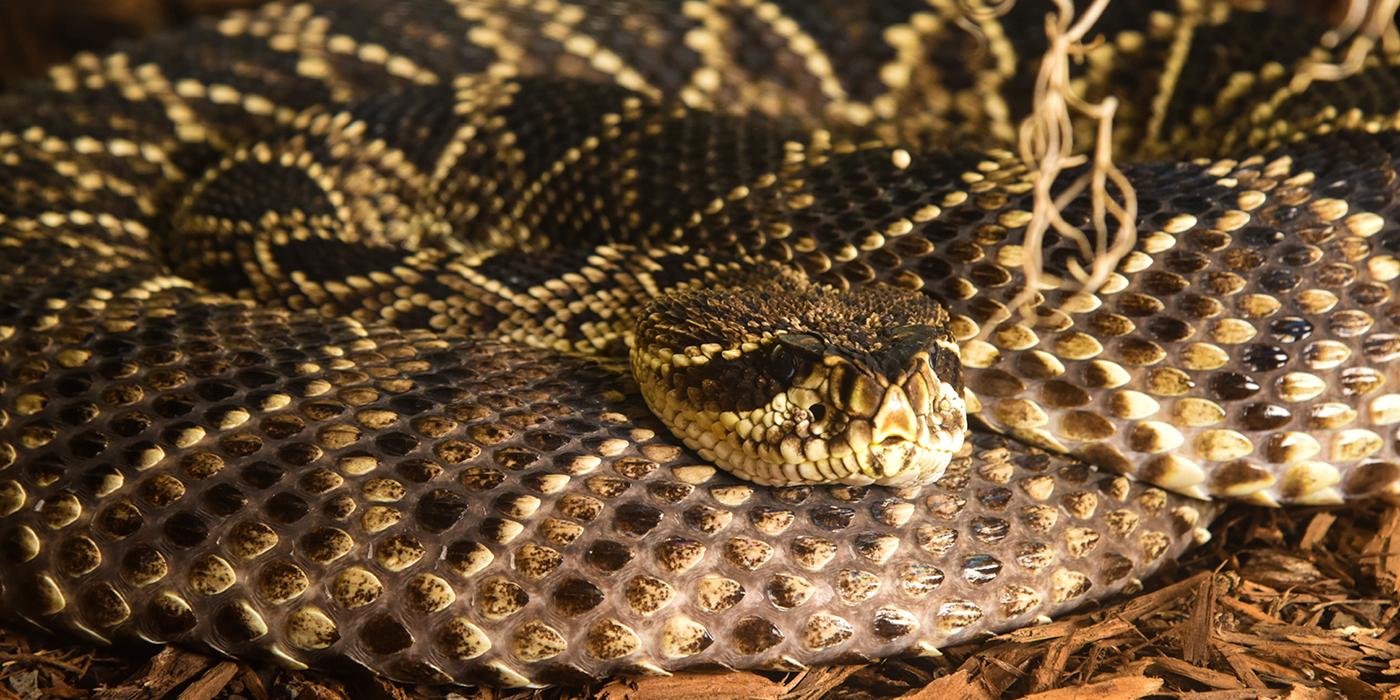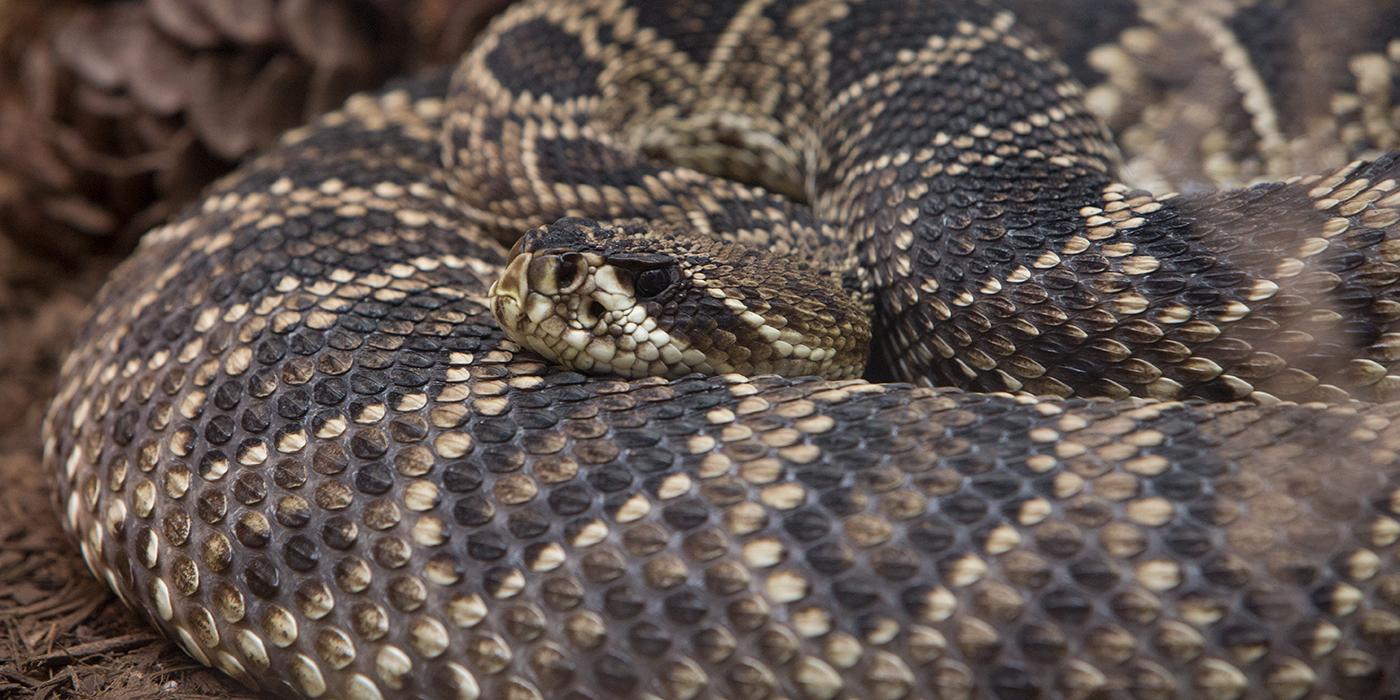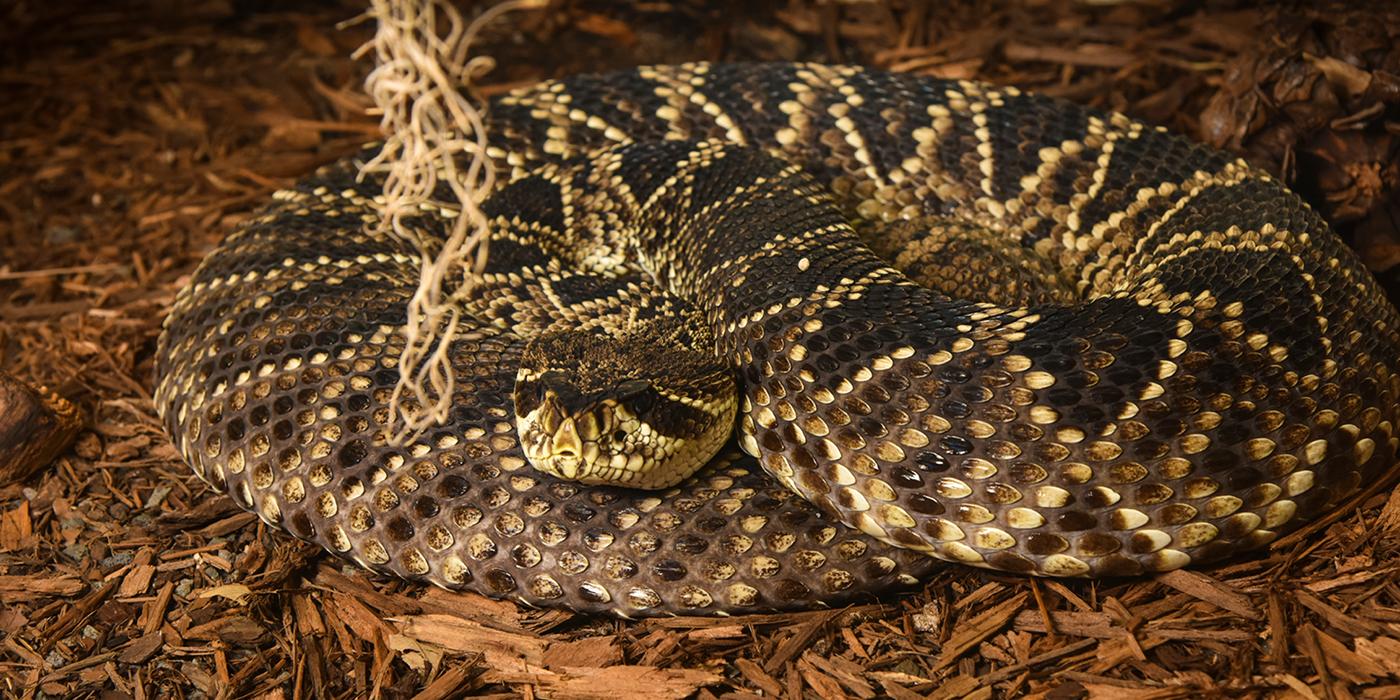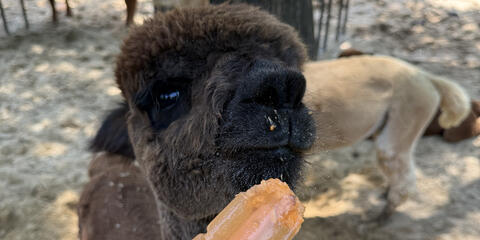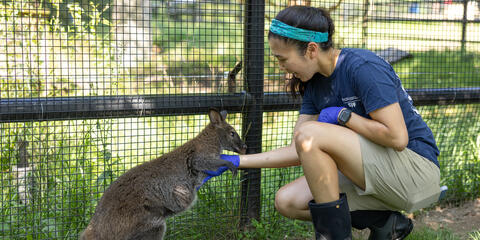Physical Description
The eastern diamondback rattlesnake can be blackish-gray, olive green or muddy gray. Light reflected off of this snake's keeled scales makes its skin appear dull, rather than shiny. Its tail is typically a different shade than its body, ranging from brown to gray and banded with dark rings.
This species is easily identified by the diamond-shaped pattern along its back (the source of its common name), as well as the distinctive black band that covers its eyes, outlined by two pale lines. It has vertical, cat-like pupils, and there is a large pit between the nostril and the eye on each side of its face.
Eastern diamondback rattlesnakes are well known for their rattle and painful, venomous bite, which can be fatal to humans. The toxin in their venom, called hemotoxin, kills red blood cells and causes tissue damage. That said, human deaths from rattlesnake bites are rare, because the antivenom is available throughout its range.
Size
Native Habitat
Eastern diamondback rattlesnakes are endemic to the southeastern United States. They are found in the pinelands of Florida, the coastal plains of North Carolina and southern Mississippi through eastern Louisiana.
They prefer scrublands, coastal forests, barrier islands and pine and wiregrass flatwoods. They can be found in slightly more moist areas, such as wet prairies or savannas and around the borders of wetlands. Abandoned farms or overgrown fields near pine forests are also likely to have eastern diamondbacks.
While they tend not to prefer wet areas, these snakes are adept swimmers and will occasionally swim in saltwater between barrier reefs and along the edges of swamps.
Lifespan
Communication
Food/Eating Habits
Diamondbacks are ambush predators, lying in wait beside logs or near the roots of fallen trees for prey to come along. They primarily feed on small mammals and will also eat birds. Young eat rats and mice, while adults prefer larger prey, such as rabbits and squirrels. They locate prey by scent, as well as by sensing the infrared waves, or heat, given off by a warm-blooded animal.
This rattlesnake can strike as far as two-thirds of its body length. For example, a 6 foot snake could strike up to a distance of 4 feet. It tends to release a lot of venom with each bite, making it a very deadly snake. After striking, the diamondback releases its prey, letting it crawl away to die. The snake pursues its kill and eats it once it is dead.
Adult eastern diamondback rattlesnakes do not have any natural predators, but young rattlesnakes have many, including hogs, gray foxes, red-tailed hawks and kingsnakes, as well as other carnivorous mammals, raptors and snakes.
Sleep Habits
The diamondback is crepuscular, or most active in the evenings and early mornings. Most of its activity occurs at ground level, but on rare occasions it will climb a few feet off the ground into bushes in pursuit of prey.
In regions with cold winters, diamondbacks hibernate in gopher tortoise or mammal burrows, hollow logs, stumps or among tree roots. On a warmer winter day, they may come out of their resting sites to bask.
Reproduction and Development
Diamondbacks are mostly solitary. During the mating season, however, males compete for breeding females by asserting their dominance. They lift the front of their bodies, entwine one another, and then try to throw each other to the ground by pushing with their bodies and necks.
These snakes mate in the late summer and fall, giving birth six to seven months later. Six to 21 snakes are born live, after hatching from eggs within the mother's body. The mother gives birth in a retreat, such as a burrow or hollow log.
At the time of birth, baby snakes are 15 inches long and similar to adults in color and pattern. A newborn's tail ends in a smooth "button," which will become the site of a future rattle. Each time the young snake sheds, another interlocked section is added to the tail to form the rattle. When a rattlesnake vibrates its tail, these segments click together and produce a buzzing sound.
Conservation Efforts
Though this animal is considered a species of least concern, conditions on the ground suggest it may be in trouble. Land use within this snake's range, such as the conversion of longleaf pine habitat for human use, is decreasing the amount of suitable habitat. Large-scale conversion of the diamondback's range includes the development of plantations, silviculture and agriculture, as well as the expansion of urban and suburban centers.
The snakeskin trade encourages annual competition for the collection of rattlesnakes in Alabama and Georgia. Putting poisonous gas into gopher tortoise burrows where these snakes hibernate during the winter is a common hunting tactic. This not only kills snakes but also affects other flora and fauna inside the burrows. Gassing burrows is now illegal in Florida and Georgia, but there are no regulations on wild captures.
The official roundup kills about 2,000 eastern diamondbacks each year, and hunters freeze the snakes until their bodies can be collected for their skin. Overall, the snakeskin trade could account for up to 20,000 diamondback deaths a year within its range. These practices put significant pressure on wild rattlesnake populations.
Help this Species
- Are you a hunter? You can be an incredible ally for conservation! Check the conservation status of the animals you hunt and use methods that don’t impact other animals.
- If you see a snake in the wild, leave it alone and encourage others to do the same. Don’t assume it is a venomous species, and don’t attack it if it doesn’t pose a threat to your safety. Tell your friends and family about the eco-services that snakes provide, such as keeping rodent populations in check.

